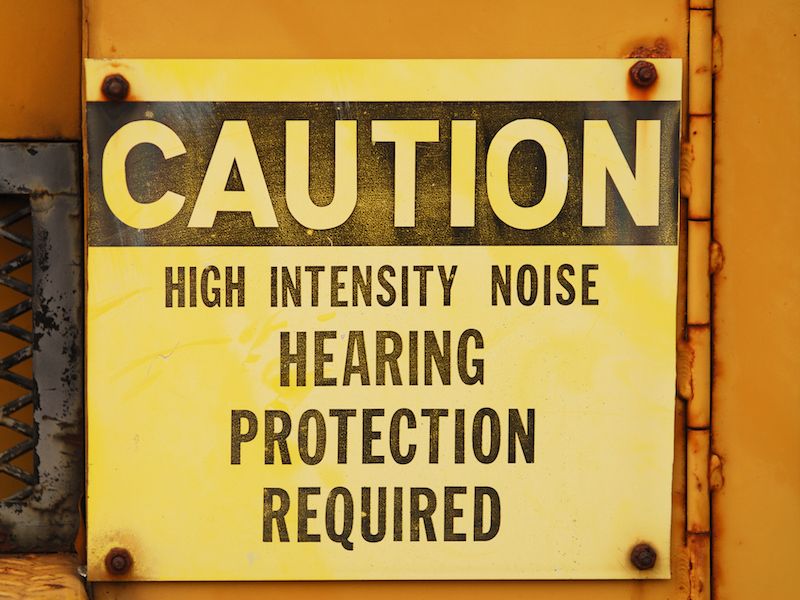
It’s one thing to know that you need to safeguard your hearing. Recognizing when to protect your ears is another matter. It’s harder than, let’s say, knowing when you need sunblock. (Is it sunny and will you be outside? Then you need sunscreen.) Even recognizing when you need eye protection is simpler (Doing some hammering? Cutting some wood or working with hazardous chemicals? Use eye protection).
When dealing with when to wear hearing protection, there seems to be a huge grey area which can be risky. Unless we have specific knowledge that some activity or place is hazardous we tend to take the easy road which is to avoid the problem altogether.
Evaluating The Risks
In general, we’re not very good at assessing risk, especially when it comes to something as intangible as injury to the ears or the possibility of permanent sensorineural hearing loss. Here are some examples to prove the point:
- Person A goes to a very loud rock concert. 3 hours is about how long the concert lasts.
- A landscaping company is run by person B. After mowing lawns all day, she goes home to quietly read a book.
- Person C is an office worker.
You may think the hearing danger is greater for person A (let’s just call her Ann). Ann leaves the performance with ringing ears, and she’ll spend the majority of the next day, trying to hear herself talk. Assuming Ann’s activity was risky to her hearing would be sensible.
Person B (let’s just call her Betty), on the other hand, is exposed to less noise. Her ears don’t ring. So her ears must be safer, right? Not really. Because Betty is mowing all day. Actually, the damage accumulates a little bit at a time although they don’t ring out. Even moderate noise, if experienced regularly, can injury your ears.
What’s going on with person C (let’s call her Chris) is even tougher to make sense of. Lawnmowers come with instructions that indicate the risks of persistent exposure to noise. But even though Chris works in a quiet office, she has a really noisy, hour-long commute every day on the train. What’s more, she sits at her desk and listens to music through earbuds. Is protection something she should think about?
When is it Time to Worry About Protecting Your Hearing?
The standard guideline is that if you have to raise your voice to be heard, your surroundings are noisy enough to do harm to your ears. And you should consider wearing earplugs or earmuffs if your surroundings are that noisy.
So to put this a little more scientifically, you need to use 85dB as your cutoff. Sounds above 85dB have the potential to cause injury over time, so you should think about using ear protection in those conditions.
Many hearing professionals suggest using a specialized app to monitor decibel levels so you will be aware when the 85dB has been reached. You will be able to take the correct steps to safeguard your ears because these apps will tell you when the noise is approaching a hazardous volume.
A Few Examples
Even if you do get that app and take it with you, your phone may not be with you everywhere you go. So a few examples of when to protect your ears may help you establish a good baseline. Here we go:
- Working With Power Tools: You recognize that working all day at your factory job is going to require ear protection. But how about the hobbyist building in his garage? Even if it’s just a hobby, hearing specialists recommend using hearing protection if you’re utilizing power equipment.
- Residential Chores: Even mowing a lawn, as previously stated, calls for hearing protection. Chores, including mowing, are probably something you don’t even think about, but they can result in hearing impairment.
- Driving & Commuting: Driving all day as an Uber or Lyft driver? Or maybe you’re just hanging around downtown for work or getting on the train. The constant noise of living in the city, when experienced for between 6 and 8 hours every day, can cause damage to your ears over the long term, specifically if you’re turning up your music to hear it over the commotion.
- Listening to music with earbuds. This one calls for caution, not protection. Whether your music is playing directly into your ears, how loud it’s playing, and how long you’re listening to it are all things you should give consideration to. Consider getting headphones that cancel out outside noise so you don’t have to turn up the sound to dangerous levels.
- Exercise: You know your morning spin class? Or even your evening yoga session? All of these cases could call for hearing protection. Those trainers who make use of sound systems and microphones (and loud music) to motivate you may be good for your heart rate, but all that volume is bad for your ears.
A good baseline may be researched by these examples. If there is any doubt, though, wear protection. In most cases, it’s better to over-protect your ears than to leave them exposed to possible harm down the road. If you want to be able to hear tomorrow, protect today.
